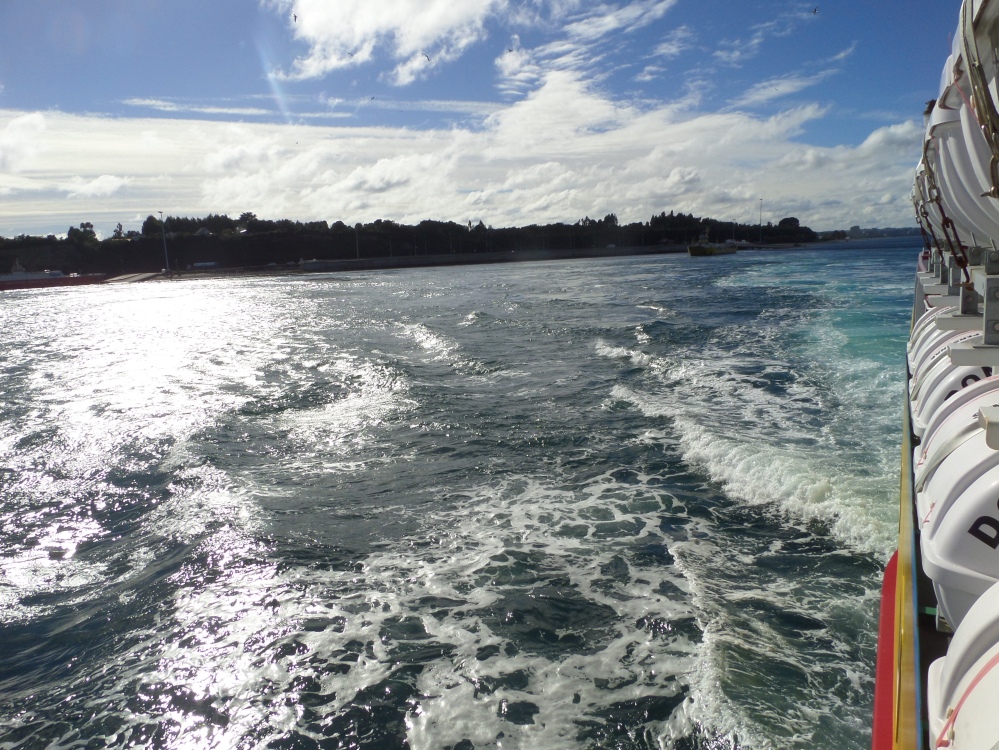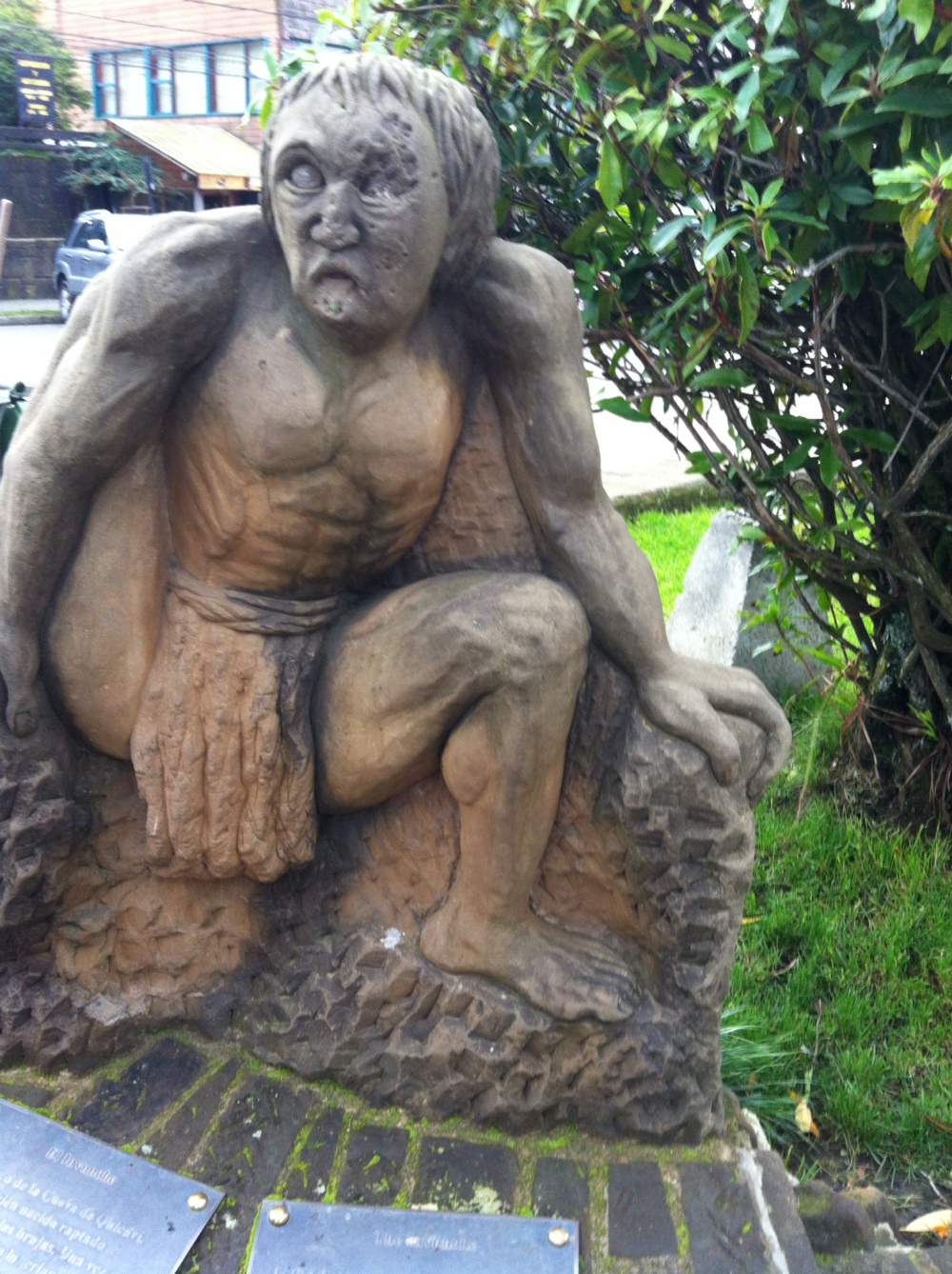Reading about Chiloe, I was informed that I would enter an island that was in “deep defiance” of Santiago and much of the North. I would find an island plagued with rain, wind and an abundance of seafood.
“You’re going to Chiloe? It’s going to rain.”
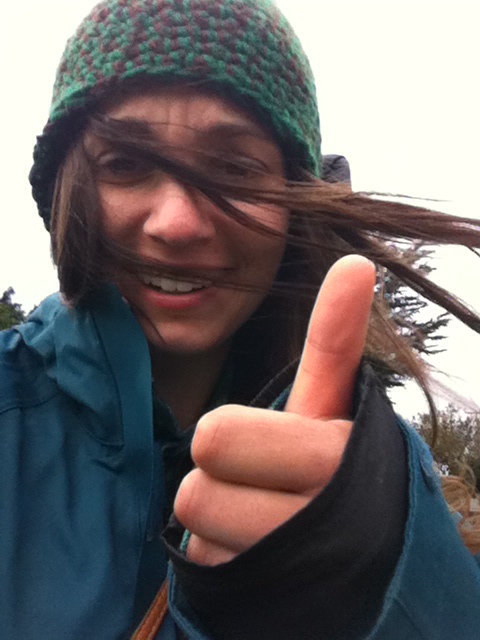
Loving the wind and rain.
It was a 13-ish hour bus ride down to Puerto Montt, a shanty sea town on the edge of Chile’s coast. When I arrived, it was 10 a.m. and, as promised, there was rain. Getting to the actual island involved another bus ride, una barca (surprisingly clear of any precipitation), and yet again another bus ride.
In Ancud, I met a girl from France. She only spoke French and broken Spanish — I only spoke English and broken Spanish. We were the only two in a hostel room of six beds. We decided to try a bar said to be popular and famous. It was decidedly empty, small and crowded with vacant tables. But both of us bonded over having the same Lonely Planet book, the freedom of solo travel and our amor for Pisco Sours.
That next morning in the hostel’s cocina, an incredibly friendly woman was cooking a huge breakfast. Two girls from Spain popped downstairs, one had recently visited Viña del Mar.
“Oh, fuiste a carrete?” I asked her.
Suddenly the cook bust out laughing. Glancing over, her hand quickly covered mouth and uttered several permiso‘s; the giggles wouldn’t stop. I began to chuckle and asked what was so funny, but I already knew. A gringa using chilenismos.
The Espanola hadn’t understood me, but the cook had and soon the two of us were splitting our sides over my chilean-sprinkled spanish. Am I Chilean yet?
As I bid goodbye to the girls, I moved south. To Castro.
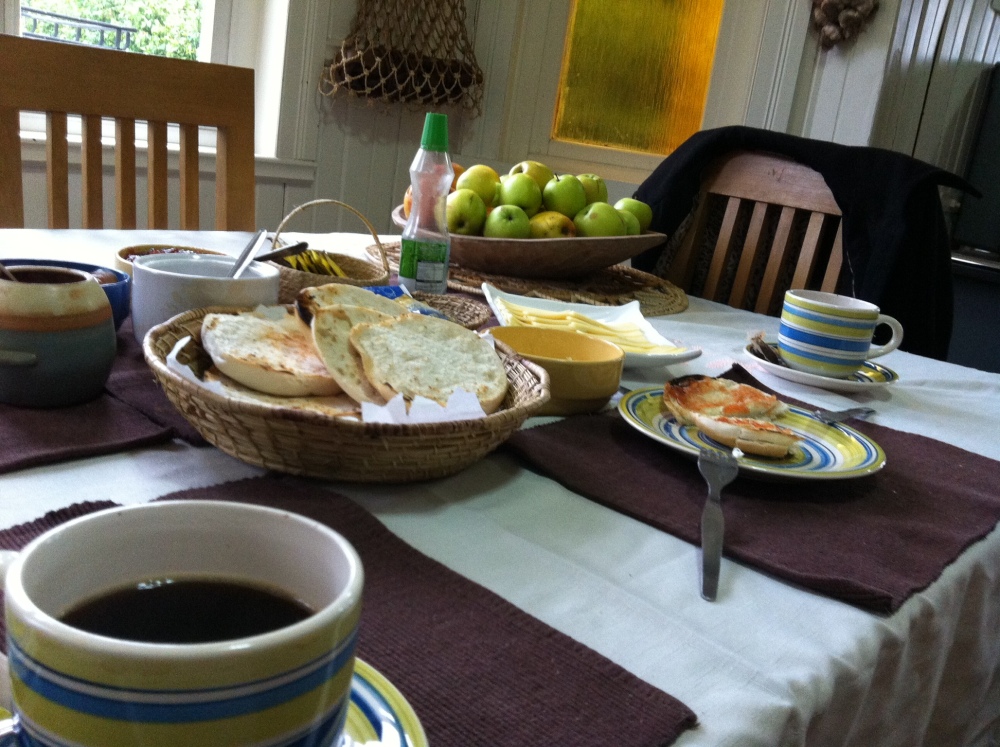
Home-cooked breakfast at the hostel in Ancud. Coffee, bread, homemade jellies and jam, fruit, cheese and more.
It was as if the island had regressed into a previous era, refusing to succumb to globalization and mass production. Sure, people use their iPhones walking along the roads, and the infamous green “Cristal” sign is seen along many a road to advertise drinking and empanadas. But the culture, the life has not changed; it’s still about independent fishermen, the churches, the mystical legends surrounding the island and the never-ending rain.
Castro, Chiloe, the island’s main “city” features a mercado open 7-days-a-week. There fresh seafood, vegetables, bread and anything else you could imagine is for sale. The mercado is larger than a football field.
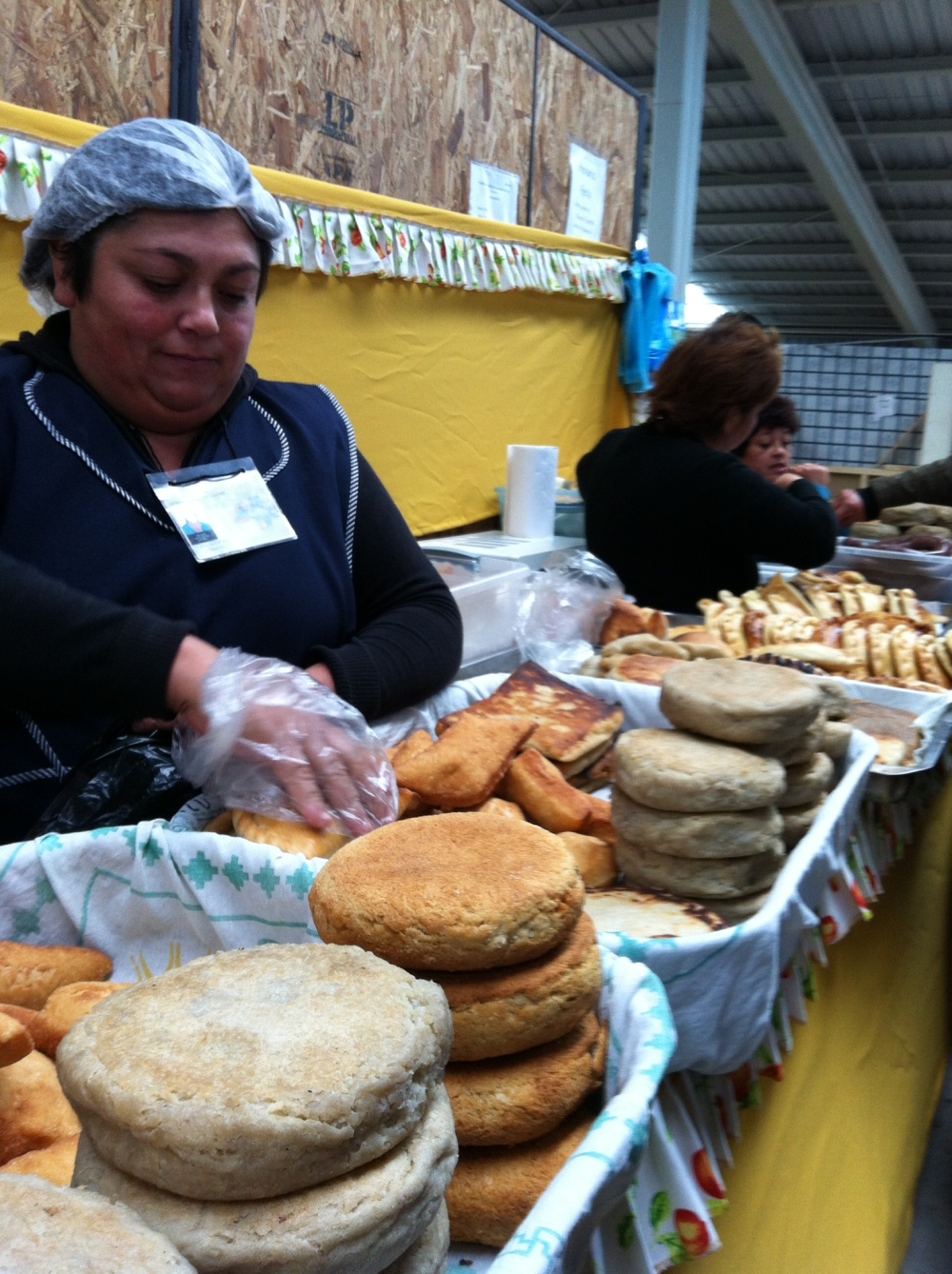
A woman sells pan — bread — inside the mercado. The display includes everything from potato and wheat buns filled with chicken to sopapillas to sugar-covered treats.
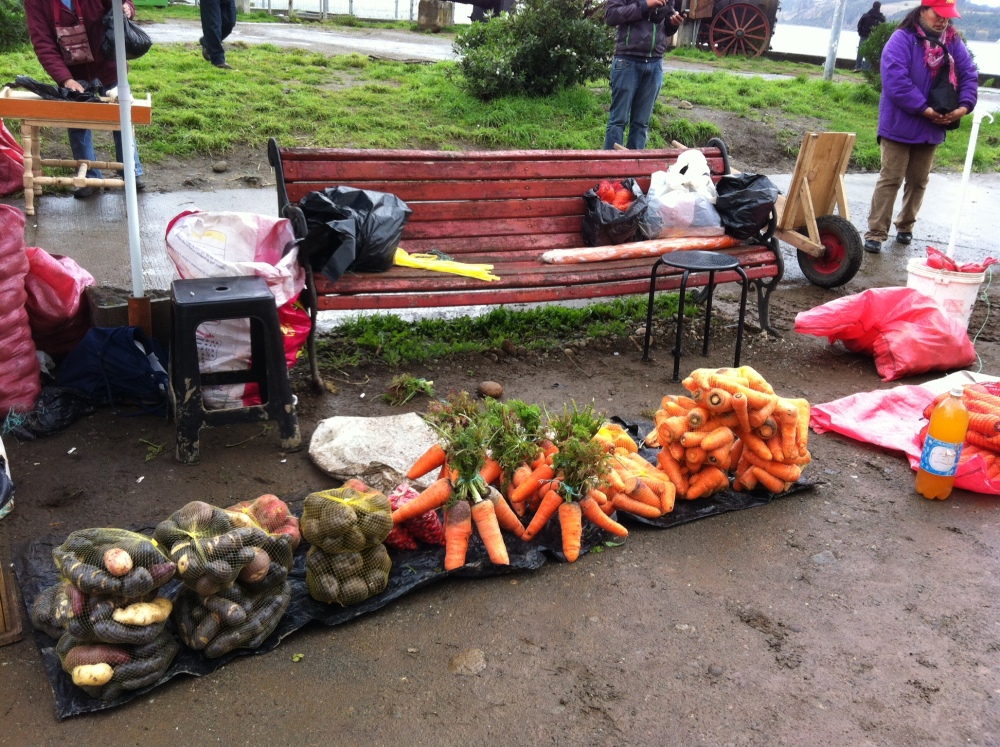
Vegetables for sale, daily. The irregular shape and array of colors in the potatoes (left) are the result of farming untouched by chemicals and synthetic pesticides.
At one end, a fisherman cracks open mussels to be prepared for soup. Further up, Chiloe tourist-trap gifts and trinckets are for sale.
“Ofreta, aqui, para ti mi hija,” un venedor tells me. I smile and thank him graciously. I snap pictures.
One woman sits in a booth with vegetables completely surrounded by her. She is selling everything from bagged celery and herbs to carrots, potatoes and dried fish.
I sit with her for a while and assist her with her selling, learning about the different vegetables, about fishermen in Chiloe. She will later introduce me to a woman at a pescado booth, who, in turn, introduces me to some fishermen who invite me onto their boat in that next morning.
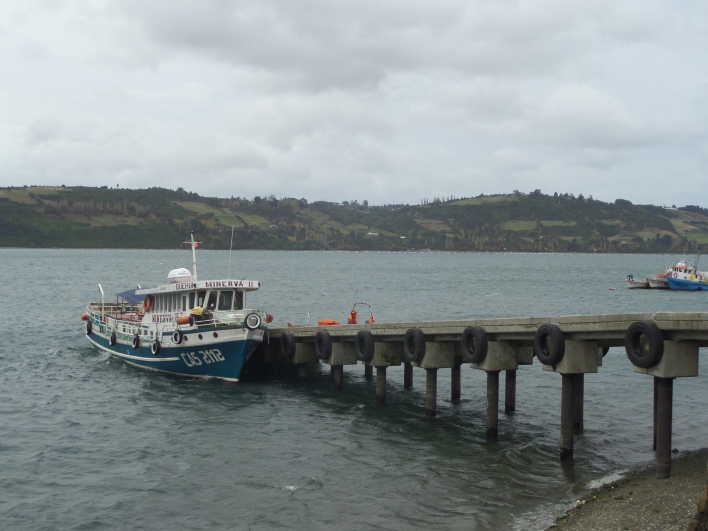
A cloudy morning along the shore. A boat sits ready along a pier and the rolling hills atrás – behind – sit silently.
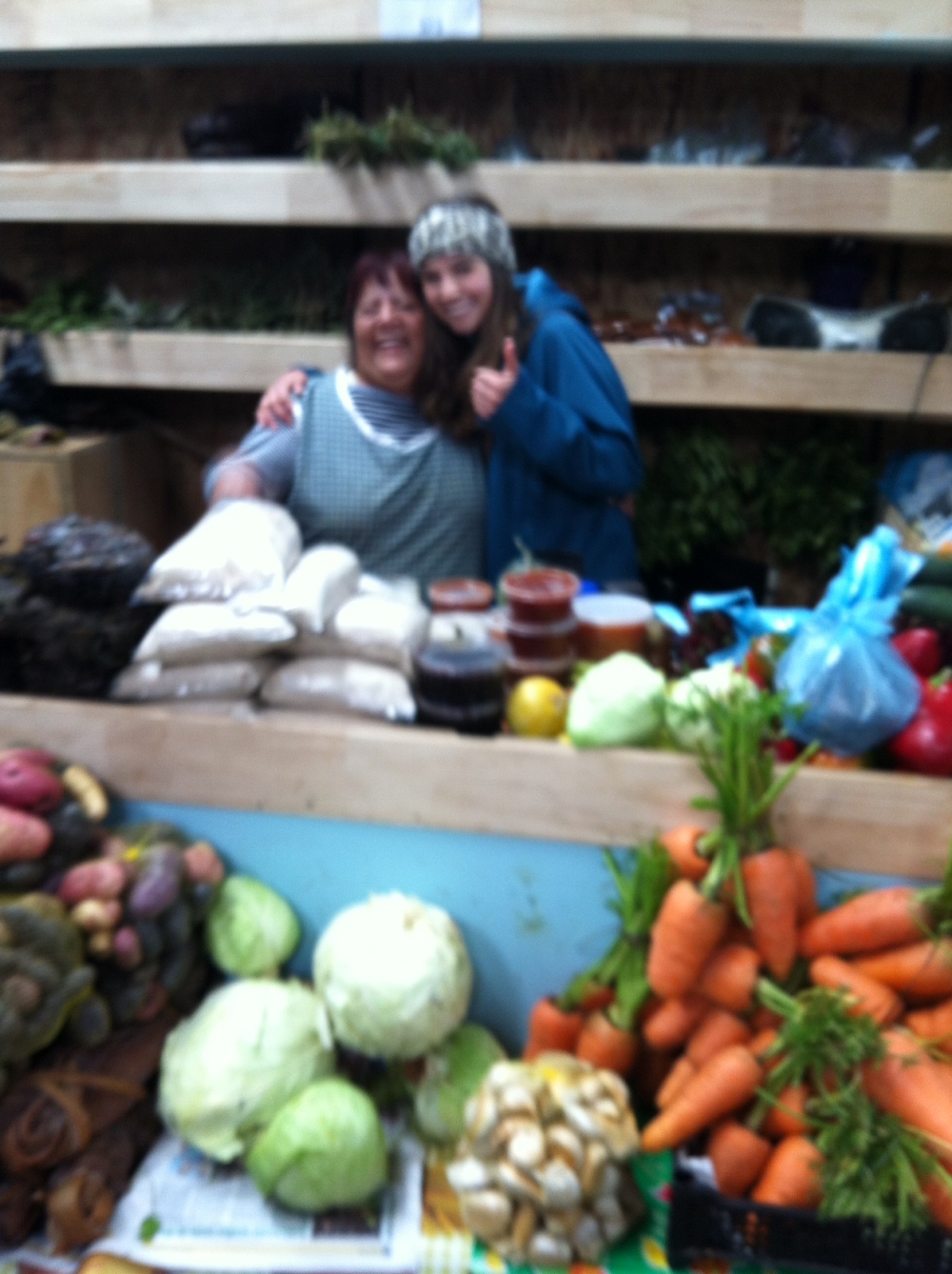
Blury selfie of the Chilote woman and myself as we bonded over selling fresh vegetables and a love of the rain. We both agree: it does have a smell.
In the morning, you can see the clouds, the fog, rising up over la vista across the water. The hills are green and ancient, rolling; they remind me of England.
In New England, there’s a saying: if you don’t like the weather, wait an hour. That’s because it’s ever changing. Well, in Chiloe, if you haven’t seen the rain yet, wait an hour. In the course of a single day, I was impeded with at least four separate rain storms — the last stretching into the night and including gale-force winds.
From this peachy weather bore las leyendas and los mitos de la isla. For example: el Caleuche, a large ghostly ship that supposedly contains beautiful women and dancers, attracting ships and fishermen, then disappearing in the fog. It is said to be able to navigate underwater.
A majority of the cities and pueblos shutdown in the evening, especially in the off-season. The rain and wind will be your friendly companion along the waters edge as the fog hovers above the sea. It is then easy to understand some of the mythical legends, and why there presence is still so strong today.
But in the morning, el espiritu is restored.
My Sunday morning starts with a trip on a fishermen’s boat to watch them pull in the catch. Some are fishing with poles. I, though, am directed to pulling seaweed out of the water barehanded. Lo como. Is there anything fresher?
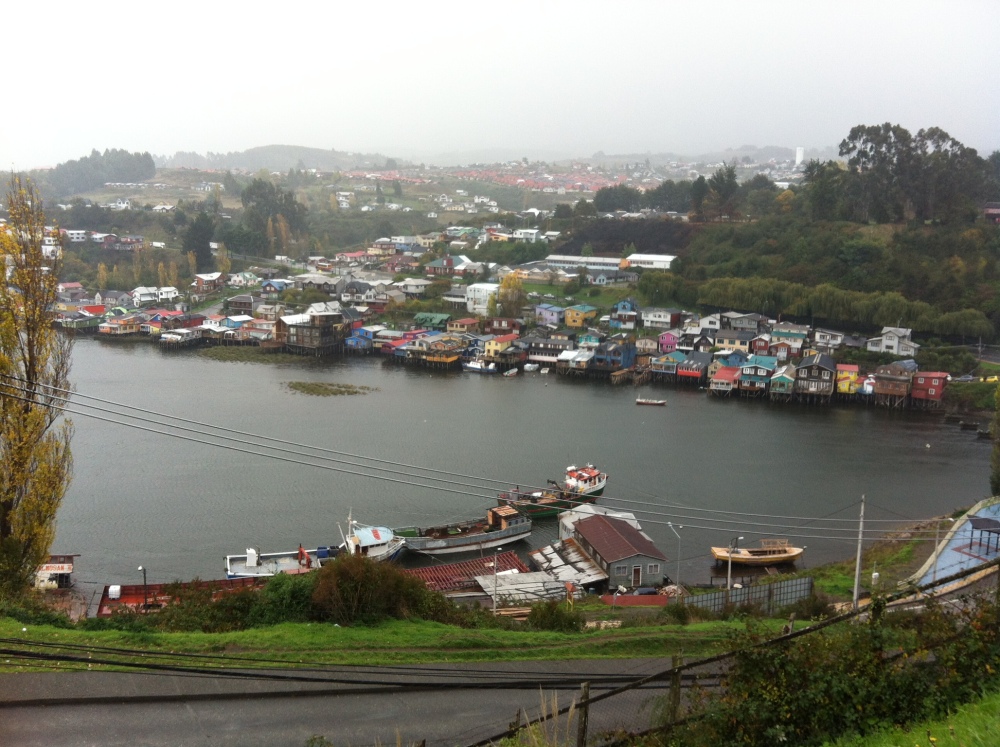
La palfitos – houses with wood shingles propped on stilts – below the hil of Castro. These houses are all colored in bright paints and attract tourists from around the world.
I am given a parting gift from the fishermen — a huge bag of alga.
The churches open and the people — Chilotes and tourists — explore the island and, on Sundays, continue their Catholic faith.
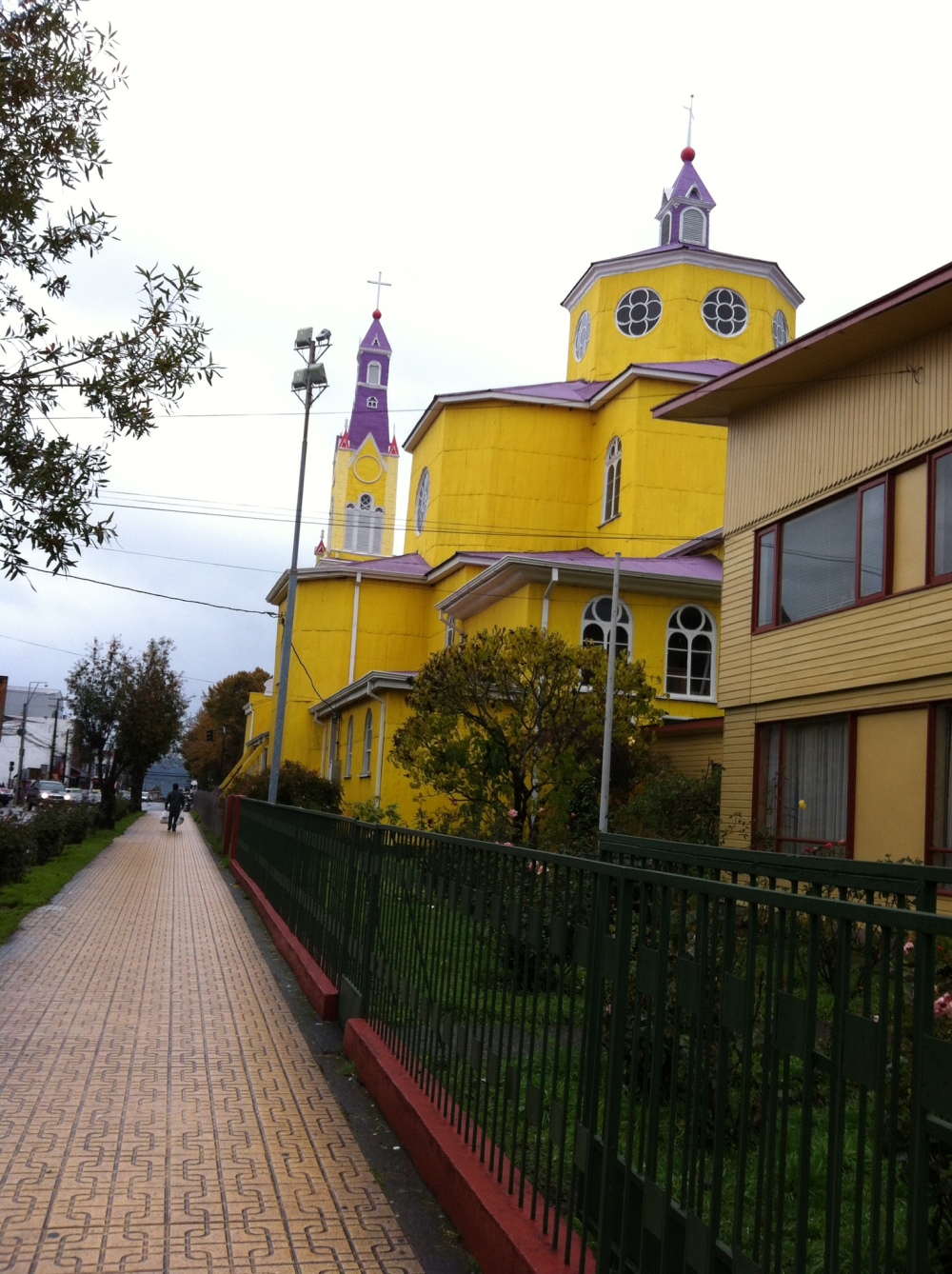
The churches colors are still obnoxiously loud after centuries of wear and tear. It often stands as a central point when locals give directions.
Which, is perhaps one of the most fabulous elements of the Chiloe. The churches. There is one, built in 18th century that screams central point of town, originally painted a loud purple and yellow: La Iglesia San Francisco de Castro. Along with 15 other churches in Chiloe, it stands as a UNESCO World Heritage Site. Hoy, after many years of weathering, the colors and wood have aged gracefully. La iglesia shows her wrinkles only to the critical, up-close eyes.
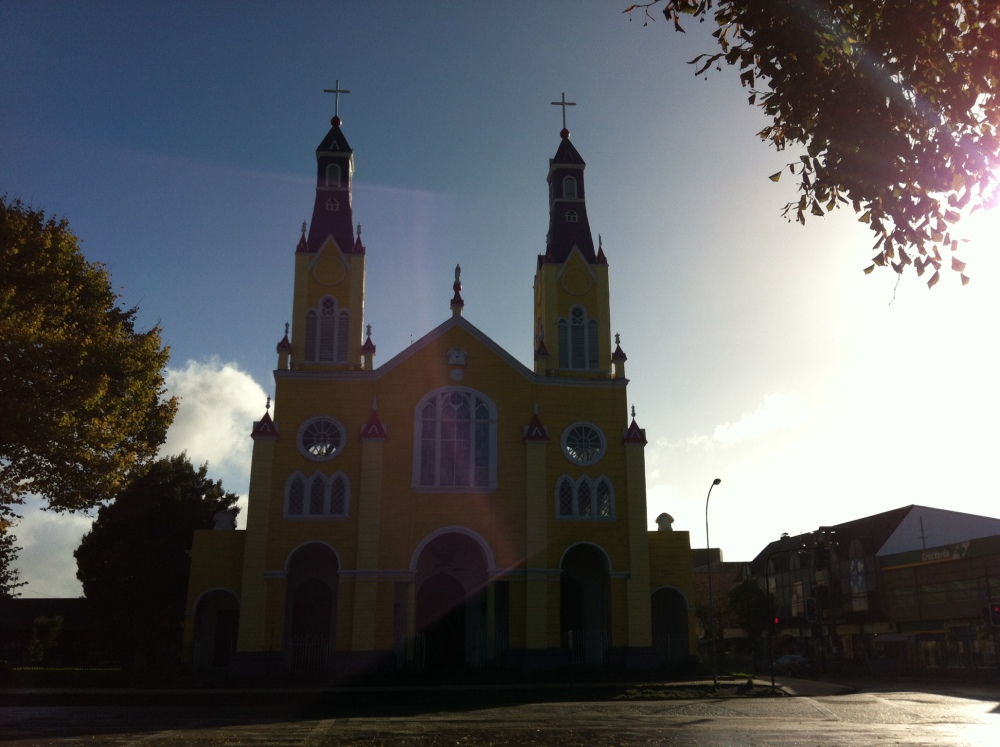
The iconic church. The sunshine. Not pictured: over three dozen tourists trying to get their perfect shot.
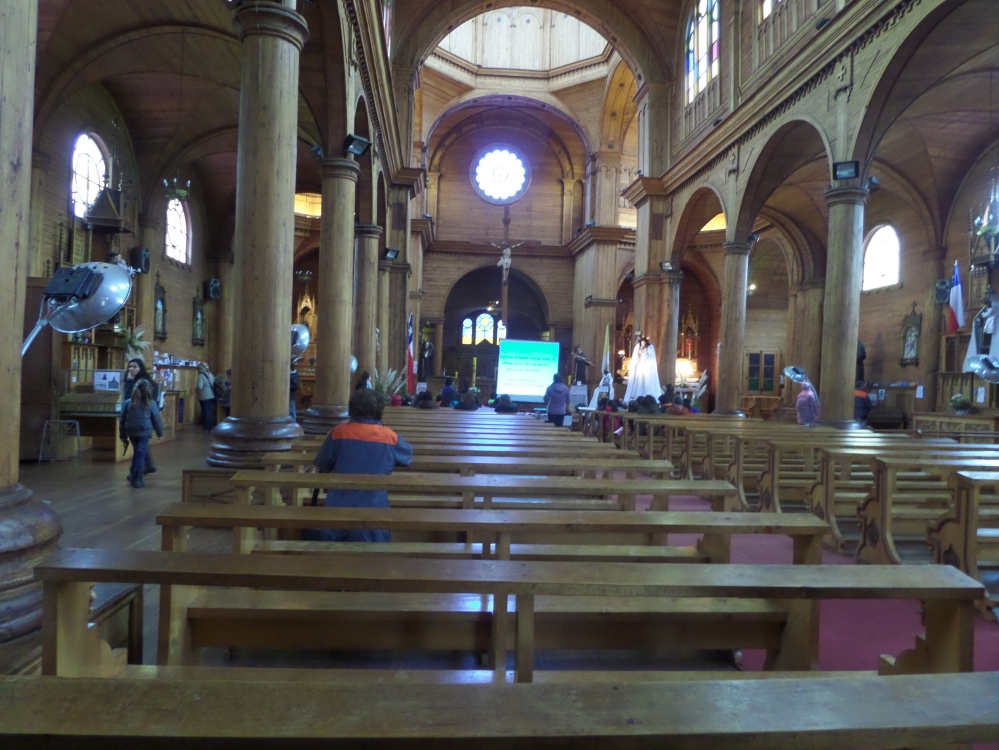
A class takes part inside the church, teaching children the Ten Commandments. Along the sides, tourists browse the to-scale models of the island’s churches, snap pictures and respect the all-wood interior house of worship.
This is Chiloe.
la barca – ferry
amor – love
(la) cocina – kitchen
fuiste a carrete – Did you party?
permiso – excuse me
mercado – market
Ofreta, aqui, para ti mi hija – My child, come here, I have an offer for you
un vendedor – seller, someone selling items at a mercado, store
pescado – fish
la vista – the view
las leyendas y los mitos – the legends and the myths
de la isla – of the island
el espiritu – spirit
Lo como – I eat it.
alga – seaweed
Hoy – Today
La iglesia – the church


